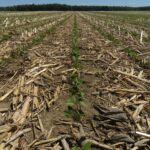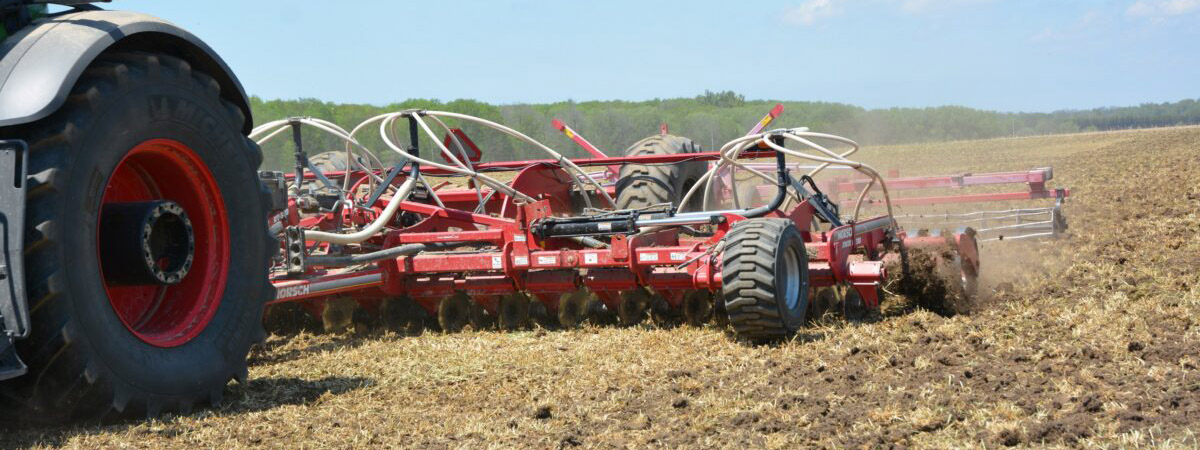Dry edible beans grow best in soils with excellent soil structure and good drainage. The seedbed requirements are similar to those for soybeans, including a firm seedbed to enhance a uniform planting depth and good seed-to-soil contact to promote rapid and uniform emergence. The best, highest-yielding stands come from beans that emerge within a week of planting and remain stress free for the first 3 weeks. This is accomplished with:
- uniform soil moisture
- good soil-to-seed contact
- secondary tillage limited to the minimum required for seedbed preparation
- surface conditions that minimize risk for soil crusting
The choice of tillage system must consider the harvest method. White and black beans are direct harvested and can be successfully grown using conventional, strip, reduced or no-till systems. Large seeded bean types, including kidney and cranberry, are typically harvested by pulling and windrowing prior to combining. Some producers have had success with direct harvest when done at the ideal bean moisture content. Conventional tillage is the traditional and most common method of preparing seedbeds for larger-seeded bean types that are pulled at harvest, but an increasing number of producers are successfully employing other tillage systems. Large-seeded coloured beans are more prone to damage by crusting because of their large cotyledons.
In no-till systems, dry edible beans respond to some form of tillage in the seed zone at planting. This is largely because of their inherently small and poorly developed root system. Tillage coulters on the planting unit will provide the necessary seed-zone tillage to optimize emergence, stand establishment, early growth and plant height. Beans are shorter when grown in a no-till system and are therefore better suited to narrow row production.
Packing following planting is usually necessary where direct harvesting is planned and for dry edible beans planted no-till into corn stubble. Packing will level the field for clipping beans close to ground and reduce stones, cornstalks and contamination from dirt when combining.
Dry edible beans are one of the most responsive crops to good soil structure and grow best on loamy, uncompacted soils. Heavy soils that are poorly drained, prone to crusting or hard to till risk uneven emergence and poor stands. Soil that remains saturated for 24 hours will cause severe seedling damage. Beans have relatively inefficient and poorly developed root systems that are susceptible to stress. Uneven emergence results in uneven ripening, delayed harvest and immature beans that increase the “pick” and result in lower grade and price when marketed.
Avoid growing dry edible beans in fields where compaction is a concern. Soil compaction is a serious dry bean production issue that restricts root growth, promotes root disease and increases risk of herbicide injury. Yield reductions from compaction and poor soil structure can be as high as 30%–50%. Compaction takes time to overcome and cannot be alleviated with tillage alone.
Recent Articles
 No-Till January 22, 2021 - Acres are limited, but dry beans are successfully grown in no-till systems in Ontario. Dry beans respond to some form of… Read More
No-Till January 22, 2021 - Acres are limited, but dry beans are successfully grown in no-till systems in Ontario. Dry beans respond to some form of… Read More Strip Till January 22, 2021 - Strip till systems are becoming increasingly common in Ontario dry bean production. Strip till offers the advantage of some tillage… Read More
Strip Till January 22, 2021 - Strip till systems are becoming increasingly common in Ontario dry bean production. Strip till offers the advantage of some tillage… Read More